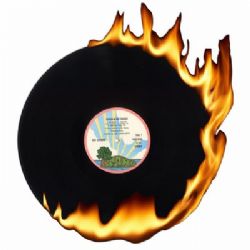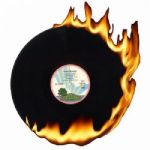
More Straight Answers to Your Hot Stamper Questions
When it comes to stampers, labels, mastering credits, country of origin and the like, we make a point of rarely revealing much of this information on the site, for a number of good reasons we discuss in some depth here.
The idea that the stampers are entirely responsible for the quality of any given record’s sound is a popular but mistaken one.
It’s a beautiful idea that must be resisted in order to make progress.
Answers Or Good Answers?
Audiophiles, like most everybody else in this veil of tears, want answers.
But in the world of records, consistently good answers are very hard to come by.
For audiophiles in search of better sound, the only approach with any real hope of success is this: doing the hard work required to find the best answer you can under your present circumstances — your present equipment, your present tweaks, your present room, your present electrical quality, your present listening skills, your present table setup, et cetera, et cetera.
For those who are interested in pursuing audio and records at the highest levels, we explain in this commentary the work it takes: The science of Hot Stampers – incomplete, imperfect, and provisional
We have a section on the website you may have seen called live and learn. This section (115+ strong!) is devoted to the discussion of records we think we got, uh, wrong.
Oh yes, it’s true. But it’s not really a problem for us here at Better Records. We see no need to cover up our mistaken judgments. The process of learning involves recognizing and correcting previous errors. Approached scientifically, the gaining of knowledge — in any field, not just record collecting or music reproduction — is slow, incremental and riddled with mistakes.
What seems true today might easily be proven false tomorrow.
If you haven’t found that out for yourself firsthand, one thing’s for sure, you haven’t been in this hobby for very long.
We’re so used to the conventional wisdom being wrong, and having our own previous findings overturned by new ones, that we gladly go out of way in listing after listing to point out just how wrong we were. (And of course why we think we are correct now.)
A common misperception among those visiting the site is that we think we know it all. Nothing could be further from the truth.
We learn something new about records with practically every shootout.
Each time we go back and play a 180 gram or half-speed mastered LP we used to like (or dislike), we gain a better understanding of its true nature.
Record cleaning gets better, front ends get better, electronics get better, tweaks get better — everything in your audio system should be improving on a regular basis, allowing you to more correctly identify the strengths and weaknesses of every record you play. (I almost forgot: your ears get better too!) If that’s not happening, we can help you make it happen.
What follows is a typical excerpt from a recent listing.
(more…)







